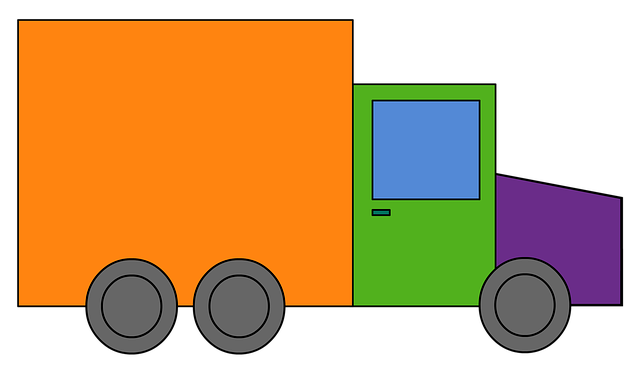Looking to register your car in California? This comprehensive guide walks you through every step, from understanding key requirements to securing your registration. We’ll help you navigate the process with ease, ensuring compliance with state regulations. Key aspects include gathering essential documents for VIN verification, performing a Vehicle Identification Number (VIN) check, and submitting applications along with required fees to the DMV. By following these steps diligently, you’ll soon have your California registration certificate in hand.
- Understand California Car Registration Requirements
- Gather Necessary Documents for VIN Verification
- Perform Vehicle Identification Number (VIN) Check
- Submit Application and Fees to DMV
- Receive Your California Registration Certificate
Understand California Car Registration Requirements

Before registering your car in California, it’s crucial to understand the state’s specific requirements. One key aspect is ensuring accurate and up-to-date vehicle identification number (VIN) verification. This process involves a thorough inspection of your car’s details, including its make, model, year, and other identifying features, which are all linked to the unique VIN. California requires this step as part of its registration process to maintain records of all vehicles on state roads.
Additionally, for added convenience, many residents opt for mobile VIN verification or inspection services. These allow you to complete the necessary checks from the comfort of your home or workplace, saving time and effort compared to traditional methods. This modern approach aligns with California’s commitment to streamlining vehicle registration procedures, making it easier for owners to manage their car’s administrative needs.
Gather Necessary Documents for VIN Verification

Before registering your car in California, you’ll need to gather several essential documents for VIN (Vehicle Identification Number) verification. This process is a crucial step in ensuring the accuracy and legitimacy of your vehicle’s information. Start by collecting your vehicle’s registration certificate from the previous state or country where the car was registered. Additionally, obtain the title document, which proves ownership. These initial steps are vital for a seamless registration experience.
For a more convenient and efficient approach, consider utilizing mobile vin verification services offered by specialized companies. A mobile vin inspector can visit your location to conduct the necessary checks, including a comprehensive vin inspection. This option is particularly beneficial if you have limited time or face challenges in visiting official facilities. Alternatively, some apps now provide digital vin verification, allowing you to confirm your car’s details with just a few clicks.
Perform Vehicle Identification Number (VIN) Check

Before registering your car in California, it’s crucial to perform a Vehicle Identification Number (VIN) check. This verification process ensures that the vehicle matches its listed details and helps prevent fraud. A VIN inspection is essential for ensuring the accuracy of the car’s history, including any previous accidents or outstanding issues.
Consider using a mobile vin verifier or undergoing a mobile vin inspection to streamline this step. These services provide quick and convenient VIN verification, allowing you to cross-reference the vehicle’s information with trusted databases. By completing this crucial task, you’ll be well on your way to successfully registering your car in California.
Submit Application and Fees to DMV

To register your car in California, the next step after gathering all required documents and ensuring your vehicle meets state standards is to submit your application and fees to the Department of Motor Vehicles (DMV). This process involves completing an application form, providing proof of identity and insurance, and paying the necessary registration fees. One crucial aspect of this process is the vin verification, which ensures that the vehicle’s unique identifier—the Vehicle Identification Number (VIN)—is legitimate and matches the specifications on file.
You can facilitate this process with a mobile vin verifier or conduct a mobile vin inspection to streamline the verification step. By ensuring your VIN is accurate and up-to-date, you’ll avoid potential delays or issues during registration. This attention to detail is vital as it not only secures your vehicle’s record but also contributes to California’s overall vehicle regulation framework.
Receive Your California Registration Certificate

Once you’ve completed all the necessary steps for registration, including providing proof of insurance and paying the relevant fees, you’ll receive your California Registration Certificate. This document is a crucial component of vehicle ownership in the state. It serves as official confirmation that your car is legally registered and insured to operate on California roads. Before you can drive off the lot or enjoy your newly registered vehicle, ensure you have this certificate in hand.
To streamline the process, many individuals opt for convenient services like mobile vin inspection or a vin inspection conducted by a trusted professional. This involves verifying your vehicle’s unique identifier, known as the Vehicle Identification Number (VIN), which is critical for tracking and authenticating your car. By utilizing these modern options, you can save time and hassle, ensuring a smooth transition from registration to hit the open road.
Registering a car in California involves understanding state requirements, gathering essential documents, and completing a VIN verification process. By following these steps—from ensuring compliance with registration criteria to submitting applications and fees—you’ll be on your way to securing a California Registration Certificate. Remember, a meticulous VIN check is crucial for a smooth registration experience.



